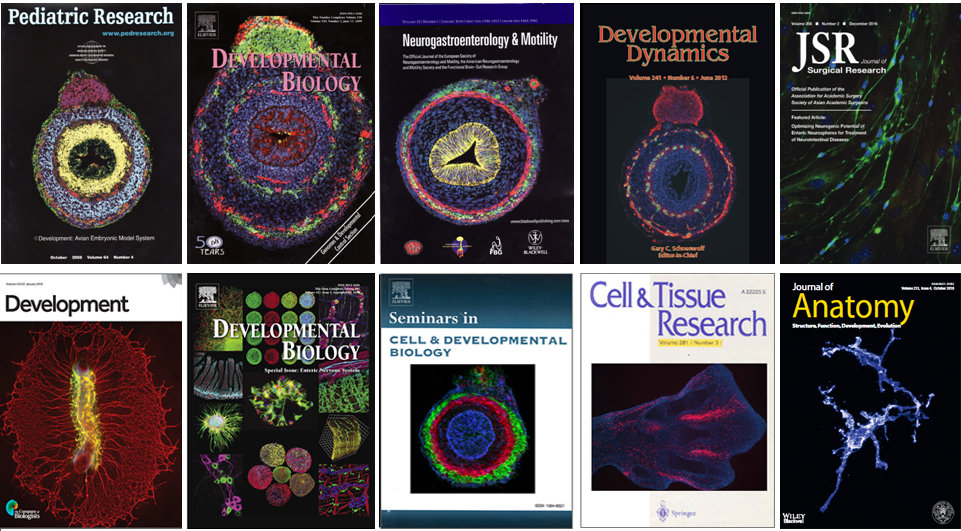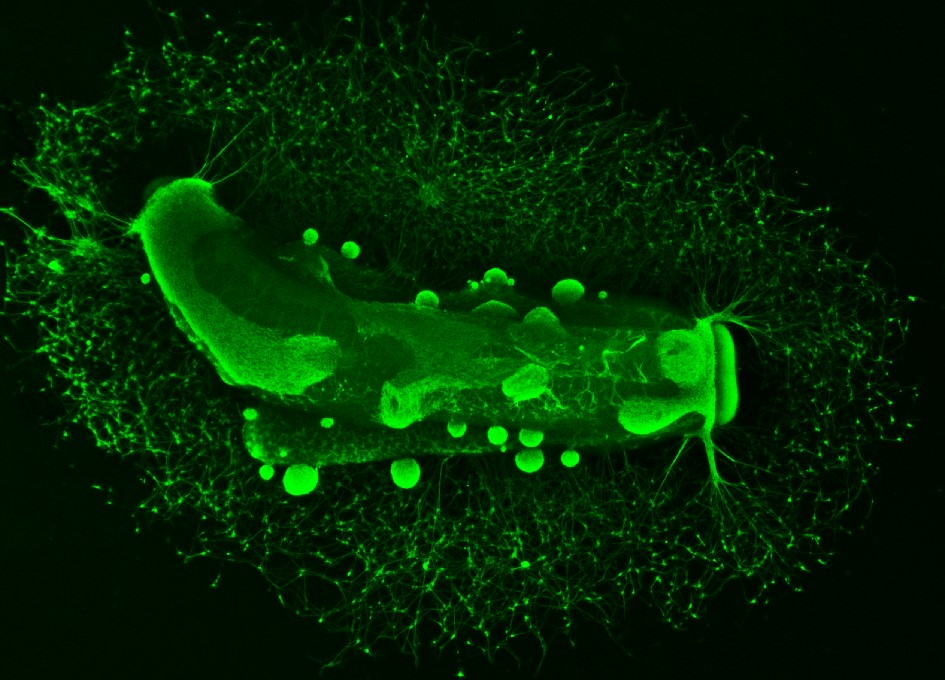The enteric nervous system: experimental and clinical aspects
Molecular and experimental embryology is one of the most dynamically developing disciplines of our time, using the results and methods of morphology, genetics, molecular biology and stem cell biology. In recent years, embryo manipulation and cell labelling experiments have become increasingly important to trace the origin, migration and differentiation of a stem cell. Transplantation of stem cells labelled with fluorescent dyes or genetically modified transgenic stem cells are suitable tools to determine the fate of the isolated and transplanted cells.
The enteric nervous system (ENS) is an extensive network of neurons and glial cells located in the intestinal wall, which is critical for the regulation of intestinal motility and other essential aspects of intestinal function. A wide spectrum of functional gastrointestinal disorders represent ENS abnormalities, including Hirschsprung’s disease (HSCR), which is caused by a disturbance in the intestinal migration of enteric neural crest cells, leading to distal intestinal aganglionosis of variable length. Current treatment consists of surgical removal of the aganglionotic colon, but many children suffer from long term side effects such as constipation and enterocolitis. Stem cell research over the last decade has raised the possibility of using these enteric neuronal stem/progenitor cells (ENSCs) in the treatment of children with HSCR, an endeavour in which we are actively involved.
Using avian, zebrafish and mouse embryo manipulation techniques we have been investigating the development and tissue interactions of neural, hematopoietic, mesenchymal and epithelial stem cells for almost two decades.
Journal cover photos from previous projects:

Research topics:
1. Characterization of ECM molecules in the tissue environment of wild type and mouse models of Hirschsprung’s disease
Our main objectives are (1) to identify factors associated with ECM molecules expressed by the developing embryonic gut and developing enteric neural crest cells and (2) to determine, both ex vivo and in vivo, how ECM proteins affect migration, proliferation and differentiation of ENSCs isolated from the postnatal intestine.
Methods: in vitro tissue recombination, microbead implantation, choriallantoic membrane transplantation, neural tube transplantation for neural crest cell lineage mapping, preparation of embryonic chimeras for neural and hematopoietic stem cell tracking, parabiosis, RCAS-retroviral gene transfer, ex vivo, in ovo and in vivo transplantation of organoids and neurospheres into embryos, adult and embryonic organs, manipulation of decellularized ECM “scaffolds”.
2. Differentiation of stem cells isolated from the enteric nervous system in the tissue environment of embryonic and Hirschsprung’s disease mouse models
We aim to culture neural stem cells isolated from the intestinal tract of Actb-DsRed and Wnt1-Cre:tdTomato transgenic mice to generate “neurosphere” type neural cell aggregates. The developmental potential of the cell aggregates is tested by transplantation into early embryos. The migration and differentiation traits observed during embryonic development will be compared with the differentiation potential of cells transplanted into adult intestinal tissue.
3. Isolation and RNA level characterization of embryonic enteric nervous system stem cells
Transcriptome analysis of migrating enteric nervous system stem cells is essential to understand and optimise cell migration during stem cell transplantation for the treatment of neurointestinal diseases. In these experiments, we will use RNAseq analysis of colonizing neural crest cells isolated from E11.5 Wnt1;tdT mouse embryos with high cell migration capacity and resting ganglion cells that have completed migration to shed light on the genes that regulate cell invasion.This would allow the characterisation of novel signalling pathways involved in embryonic and postnatal neuronal migration.
